Parted Crafts: A must-visit exhibition on how Partition impacted Bengal’s handicrafts
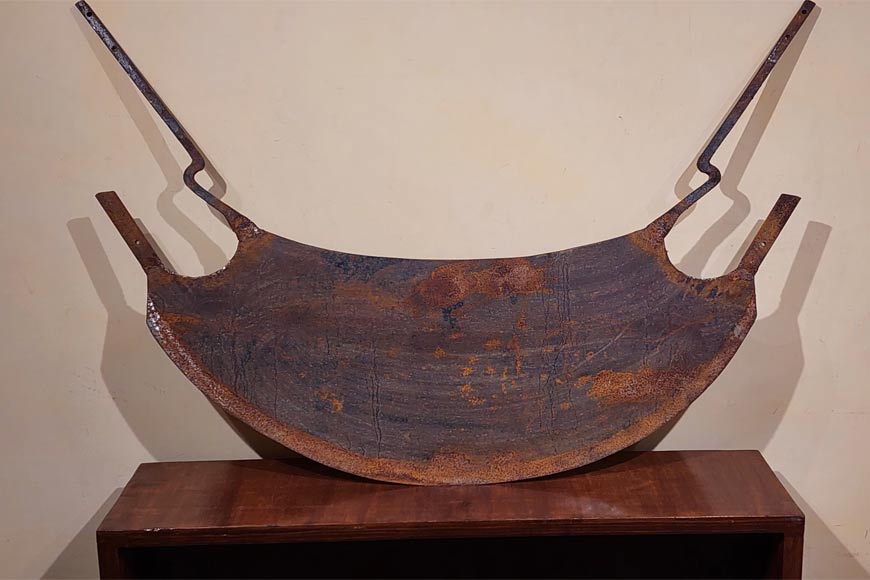
Shankher korat
Those familiar with Bengali proverbs will know all about a ‘shankher korat’, the nearest English equivalent probably being ‘between a rock and a hard place’. The proverbial ‘korat’ is a fearsome circular cutter used to carve bangles out of conch shells, and what has made it proverbial is that both its edges are equally sharp, so it literally cuts both ways.
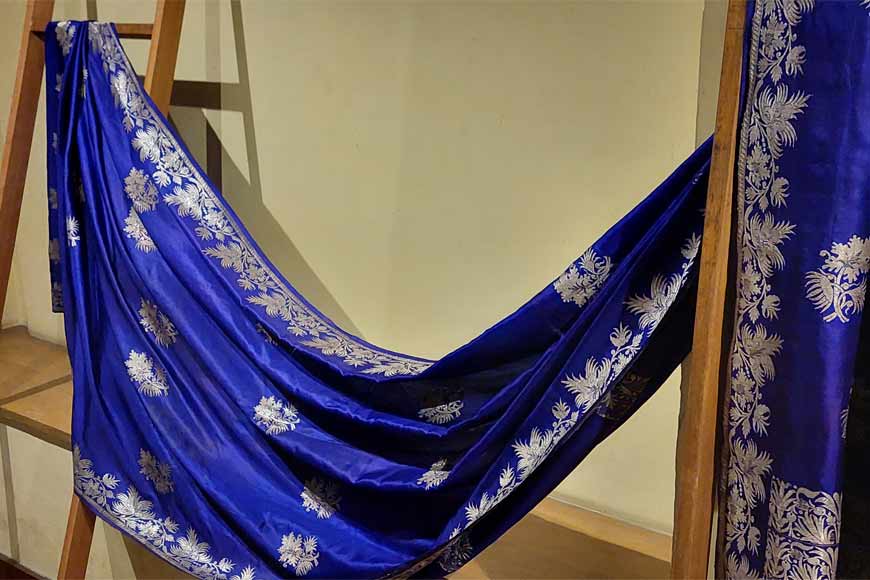 A century old benarasi sari
A century old benarasi sari
Ever wondered if this ‘korat’ truly exists? Have you actually seen one? Well, a sample is on proud display at Parted Crafts, ‘an exhibition narrating the craft traditions through the Partition of Bengal to the present day’, as the descriptor says, in the Bengal Gallery at Indian Council of Cultural Relations, Ho Chi Minh Sarani.
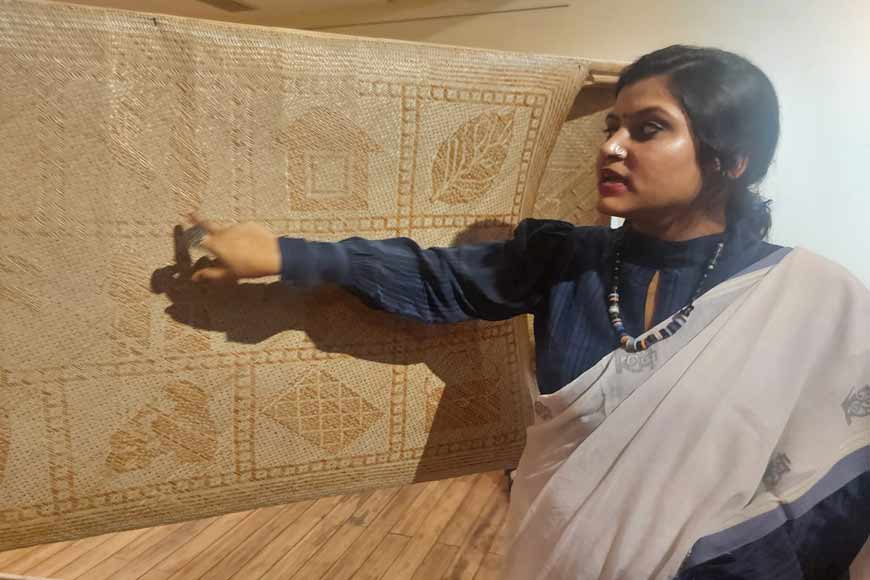 Archi Banerjee
Archi Banerjee
Curated by young designer and researcher Archi Banerjee, the exhibition is being held in association with University of the Arts London, Mead Fellowships, and the Kolkata Partition Museum, and is on view until December 4, from 3.00-8.00 pm daily.
Fascinating would be a mild description of what is on display. However, even more fascinating is that which is not on display – the human histories behind the crafts, the Partition stories accompanying each exhibit, and the impact that geopolitics can have on our arts, and therefore our lives.
The stories are told by Archi herself as she shows you around, with a knowledge and passion for her subject as captivating as the exhibits themselves. Some of the interviews with the craftspeople are also available in the form of audio and video recordings which you can listen to on the spot.
-and-a-carved-conch-shell-in-on-old-tin-box-once-used-by-shankharis-to-carry-their-ware.jpg) Conch bangles (shankha) and a carved conch shell in on old tin box once used by shankharis to carry their ware
Conch bangles (shankha) and a carved conch shell in on old tin box once used by shankharis to carry their ware
At first sight, the display is not extensive. And yet, you could easily spend the better part of two hours simply exploring the backstories of the benarasi weavers of Uttar Pradesh who made their home in Bangladesh, or a conch shell paying tribute to the 1971 Liberation War of Bangladesh (Muktijuddho), a shital pati (handwoven mat) from Cooch Behar bearing the likeness of Sheikh Mujibur Rahman, or a red and yellow bird made of shola-pith from North Bengal.
One of the highlights of the display is a tangail sari woven by Iti Biswas of Phulia, the town in Nadia famed for its tangail weaves in cotton and silk, named after Tangail (in modern Bangladesh) where the craft originated. Iti has woven the story of her life into the ‘anchal’ or free end of the sari, an extraordinary tale of separation, longing, deprivation, and triumph.
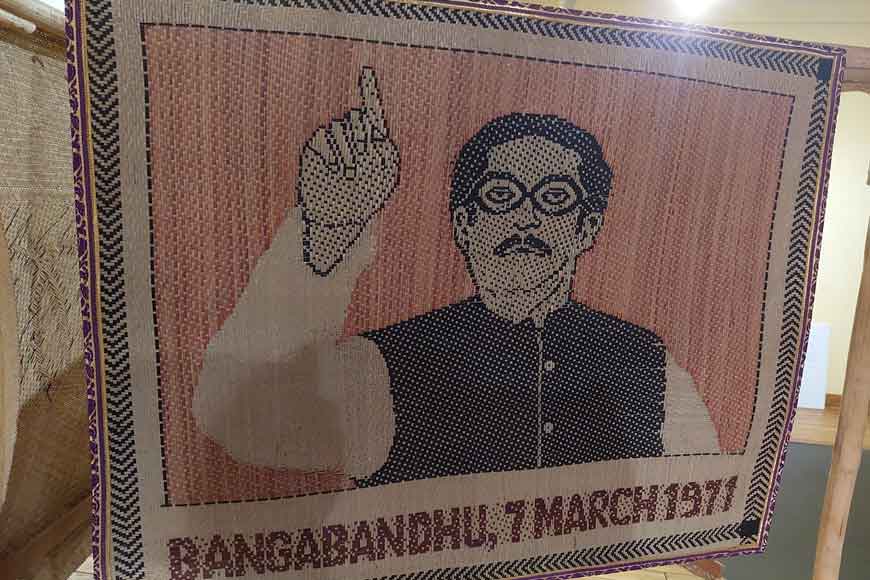 Mujibur Rahman on a decorative shital pati
Mujibur Rahman on a decorative shital pati
Not to give away any spoilers for those who do wish to visit, Iti was the third girl child born to her parents, an unwanted baby whose given name was soon eclipsed by the nickname ‘ghinna’ (disgust in Bengali). How the girl accustomed to refer to herself as ‘ghinna’ is now a master weaver and the principal bread earner of her family is a story worthy of an entire film, forget one sari.
The exhibition throws up many such enthralling bits of information. Did you know, for instance, that the conch shells which are still part of almost every Bengali household come from the coasts of Tamil Nadu and Sri Lanka? Or that in Tamil Nadu, the shells are gathered from the seas by ‘Madrasi Muslim’ divers, a family of whom Archi has located in Kolkata?
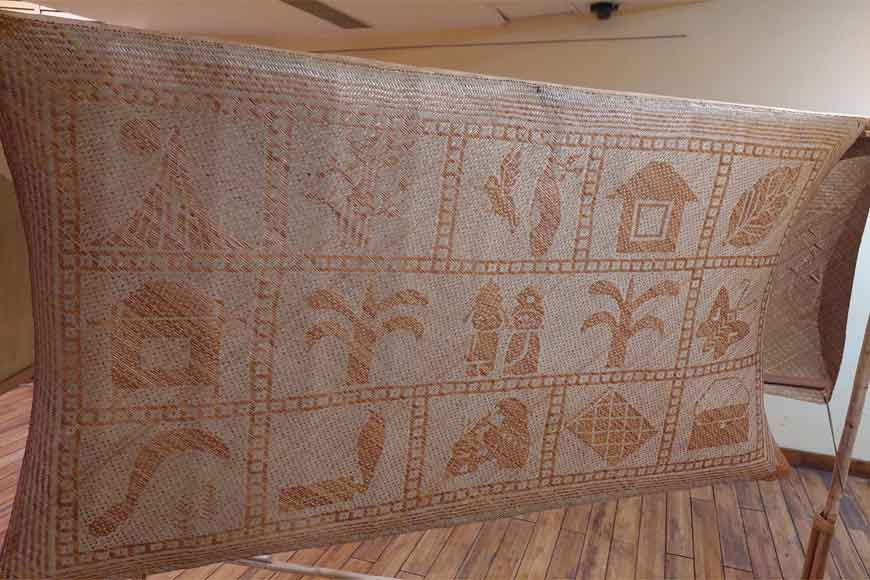 Shital pati from Coochbehar
Shital pati from Coochbehar
Would you imagine that the post-Partition migration of the shankharis (conch shell craft workers) from Bangladesh to West Bengal was prompted by the realisation that there would be few takers for their art in a Muslim-majority nation? Or that rioters in Dhaka stayed away from the shankhari neighbourhood for fear of being attacked with the shankher korat?
Would you know that the shital pati, the traditional mats made from the murta shrub in Cooch Behar, have a history of violence and politics behind them worthy of a book? Or the community history of such last names as Basak, Malakar, or Pal?
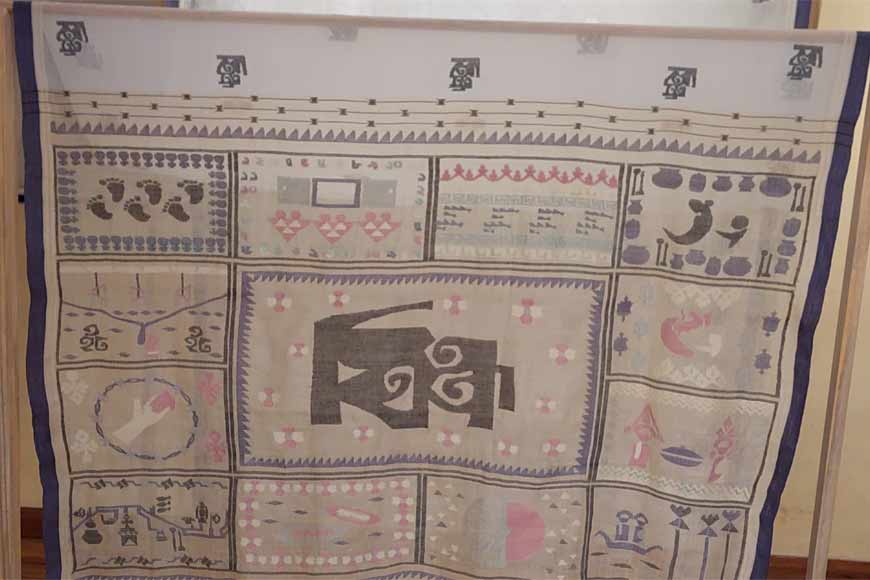 The tangail bearing Iti's story
The tangail bearing Iti's story
All of which makes it imperative to pay the exhibition a visit, though Archi confesses herself pleasantly surprised at the number of visitors who have shown up already. So you need not go for the sake of the exhibition, but do go for your own.
Parted Crafts is on display at the Bengal Gallery, ICCR, 9 Ho Chi Minh Sarani, until December 4, 3.00-8.00 pm daily








.jpg)


